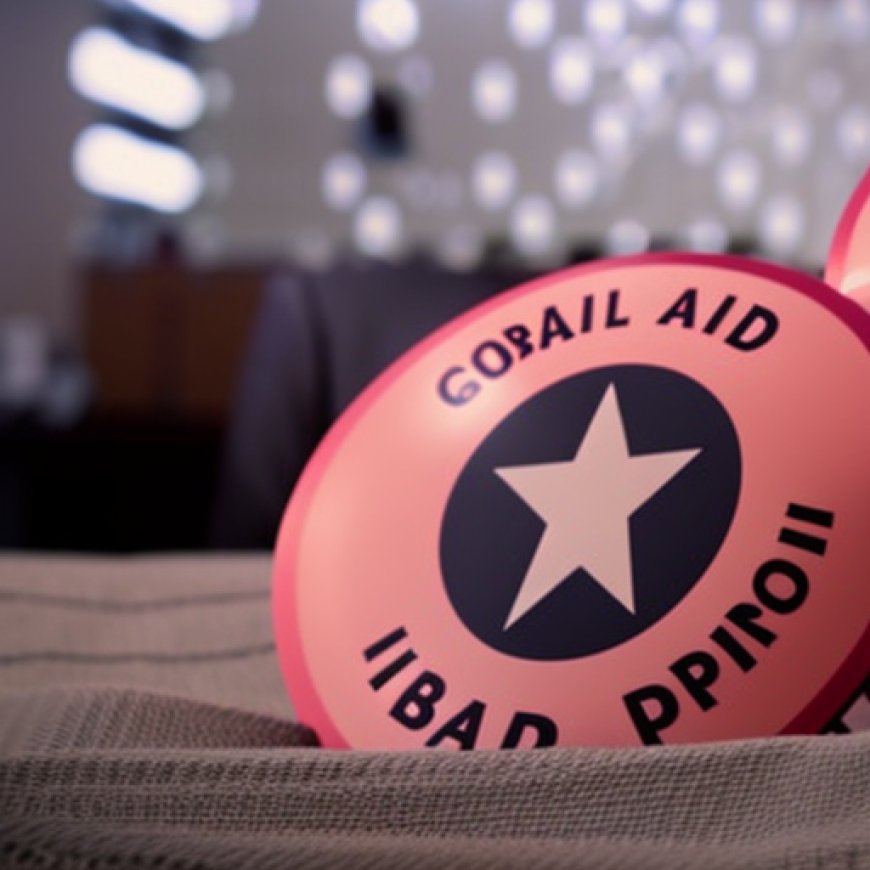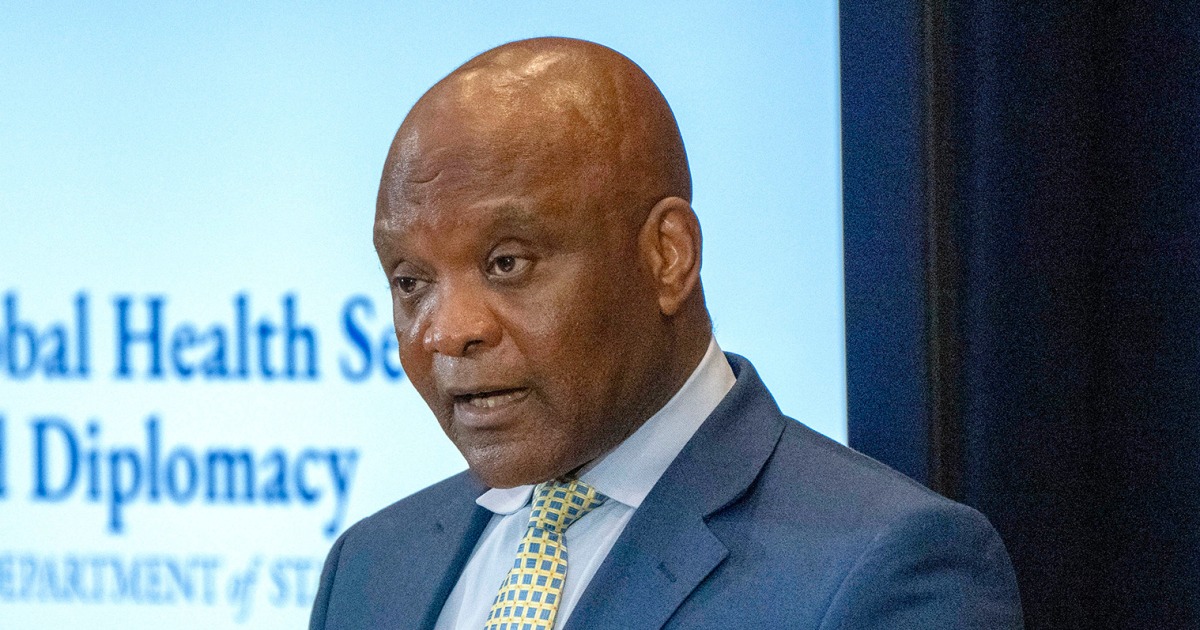Global AIDS program targeted in abortion battle gets new home in State Department bureau
Global AIDS program targeted in abortion battle gets new home in State Department bureau NBC News


The State Department Launches New Bureau to Prioritize Global Health Security

WASHINGTON — The State Department launched a new bureau Tuesday aimed at making the battle against global outbreaks a lasting priority of U.S. foreign policy, even as one of its key elements — a widely acclaimed HIV program — has become caught up in the political battle over abortion.
The President’s Emergency Program for AIDS Relief (PEPFAR)
The bureau is to include the 20-year-old initiative known as the President’s Emergency Program for AIDS Relief, or PEPFAR. The program is relatively unknown to Americans but has succeeded beyond most early expectations in addressing the AIDS crisis and is credited with saving up to 25 million lives worldwide.
Leadership and Background
The bureau will be led by a public health official integral to PEPFAR, John N. Nkengasong. Born in Cameroon, Nkengasong was a founder of U.S. Center for Disease Control and Prevention operations in Africa. He helped set up some of the sub-Saharan’s first sophisticated labs for work with HIV and AIDS.
Political Challenges
President George W. Bush started PEPFAR in Africa in 2003. The program retains bipartisan support. But anti-abortion groups and some House Republicans, including Rep. Chris Smith of New Jersey, are pushing to attach abortion-related limits on U.S. health support overseas to the reauthorizing legislation. They are also seeking yearly votes on PEPFAR’s continuance.
While the Democratic-controlled Senate is expected to try to squash any such GOP conditions on the HIV program, the skirmish signals the PEPFAR program is now likely a captive of U.S. abortion politics going forward.
Support and Impact
Secretary of State Antony Blinken, in a ceremony for the new Bureau of Global Health Security and Diplomacy, made only a passing reference to the abortion fight threatening PEPFAR’s normally assured support from lawmakers, saying he hoped Congress approved the program for another five years, without amendments.
The $100 billion in U.S. support for the PEPFAR program over 20 years is credited with lasting improvements in health care systems globally.
Nkengasong helped establish one of the first local government-run HIV drug programs, in Ivory Coast at a time that HIV and AIDS medications were too scarce and too costly for most people in the sub-Saharan country.
The lessons learned from the U.S. HIV program “are applied daily” in dealing with other threats, he said Tuesday.
The success of the PEPFAR program as it grew across Africa and around the world over decades made it “the single greatest health achievement in history,” said Samantha Power, head of the U.S. Agency for International Development.
Global Health Security as a Priority
Power cited the economic and human toll of the COVID-19 pandemic, and pointed to estimates that the warming climate and other changing conditions make for a 40% increase in the chances that another pandemic on the same scale as COVID will happen in our lifetimes.
Creation of the new bureau is meant to raise health security as a global priority, build up the capacity of U.S. diplomats and local health systems globally to better curb outbreaks, and get the most out of U.S. assistance to health systems globally, Blinken said.
SDGs, Targets, and Indicators
| SDGs | Targets | Indicators |
|---|---|---|
| SDG 3: Good Health and Well-being | Target 3.3: By 2030, end the epidemics of AIDS, tuberculosis, malaria, and neglected tropical diseases and combat hepatitis, water-borne diseases, and other communicable diseases | Indicator 3.3.1: Number of new HIV infections per 1,000 population, by sex and age |
| SDG 5: Gender Equality | Target 5.6: Ensure universal access to sexual and reproductive health and reproductive rights as agreed in accordance with the Programme of Action of the International Conference on Population and Development and the Beijing Platform for Action and the outcome documents of their review conferences | Indicator 5.6.1: Proportion of women aged 15-49 years who make their own informed decisions regarding sexual relations, contraceptive use, and reproductive health care |
| SDG 17: Partnerships for the Goals | Target 17.14: Enhance policy coherence for sustainable development | Indicator 17.14.1: Number of countries with mechanisms in place to enhance policy coherence of sustainable development |
1. Which SDGs are addressed or connected to the issues highlighted in the article?
SDG 3: Good Health and Well-being
The article discusses the launch of a new bureau aimed at making the battle against global outbreaks a lasting priority of U.S. foreign policy. This aligns with SDG 3, which focuses on ensuring healthy lives and promoting well-being for all at all ages.
SDG 5: Gender Equality
The article mentions that anti-abortion groups and some House Republicans are pushing to attach abortion-related limits on U.S. health support overseas. This connects to SDG 5, which aims to achieve gender equality and empower all women and girls.
SDG 17: Partnerships for the Goals
The article highlights the bipartisan support for the President’s Emergency Program for AIDS Relief (PEPFAR) and the potential impact of abortion politics on its continuance. This relates to SDG 17, which emphasizes the importance of global partnerships to achieve the Sustainable Development Goals.
2. What specific targets under those SDGs can be identified based on the article’s content?
Target 3.3: By 2030, end the epidemics of AIDS, tuberculosis, malaria, and neglected tropical diseases and combat hepatitis, water-borne diseases, and other communicable diseases
The article mentions the President’s Emergency Program for AIDS Relief (PEPFAR), which has succeeded in addressing the AIDS crisis and is credited with saving up to 25 million lives worldwide. This aligns with Target 3.3 under SDG 3.
Target 5.6: Ensure universal access to sexual and reproductive health and reproductive rights as agreed in accordance with the Programme of Action of the International Conference on Population and Development and the Beijing Platform for Action and the outcome documents of their review conferences
The article discusses the political battle over abortion-related limits on U.S. health support overseas. This relates to Target 5.6 under SDG 5, which aims to ensure universal access to sexual and reproductive health and reproductive rights.
Target 17.14: Enhance policy coherence for sustainable development
The article highlights the need for policy coherence in addressing global health security and diplomacy. This connects to Target 17.14 under SDG 17, which focuses on enhancing policy coherence for sustainable development.
3. Are there any indicators mentioned or implied in the article that can be used to measure progress towards the identified targets?
Indicator 3.3.1: Number of new HIV infections per 1,000 population, by sex and age
The article mentions the success of PEPFAR in addressing the AIDS crisis and saving lives worldwide. This indicator can be used to measure progress towards Target 3.3 under SDG 3.
Indicator 5.6.1: Proportion of women aged 15-49 years who make their own informed decisions regarding sexual relations, contraceptive use, and reproductive health care
The article discusses the political battle over abortion-related limits on U.S. health support overseas, which can impact women’s access to reproductive health care. This indicator can be used to measure progress towards Target 5.6 under SDG 5.
Indicator 17.14.1: Number of countries with mechanisms in place to enhance policy coherence of sustainable development
The article emphasizes the need for policy coherence in addressing global health security and diplomacy. This indicator can be used to measure progress towards Target 17.14 under SDG 17.
4. Table: SDGs, Targets, and Indicators
| SDGs | Targets | Indicators |
|---|---|---|
| SDG 3: Good Health and Well-being | Target 3.3: By 2030, end the epidemics of AIDS, tuberculosis, malaria, and neglected tropical diseases and combat hepatitis, water-borne diseases, and other communicable diseases | Indicator 3.3.1: Number of new HIV infections per 1,000 population, by sex and age |
| SDG 5: Gender Equality | Target 5.6: Ensure universal access to sexual and reproductive health and reproductive rights as agreed in accordance with the Programme of Action of the International Conference on Population and Development and the Beijing Platform for Action and the outcome documents of their review conferences | Indicator 5.6.1: Proportion of women aged 15-49 years who make their own informed decisions regarding sexual relations, contraceptive use, and reproductive health care |
| SDG 17: Partnerships for the Goals | Target 17.14: Enhance policy coherence for sustainable development | Indicator 17.14.1: Number of countries with mechanisms in place to enhance policy coherence of sustainable development |
Behold! This splendid article springs forth from the wellspring of knowledge, shaped by a wondrous proprietary AI technology that delved into a vast ocean of data, illuminating the path towards the Sustainable Development Goals. Remember that all rights are reserved by SDG Investors LLC, empowering us to champion progress together.
Source: nbcnews.com

Join us, as fellow seekers of change, on a transformative journey at https://sdgtalks.ai/welcome, where you can become a member and actively contribute to shaping a brighter future.







